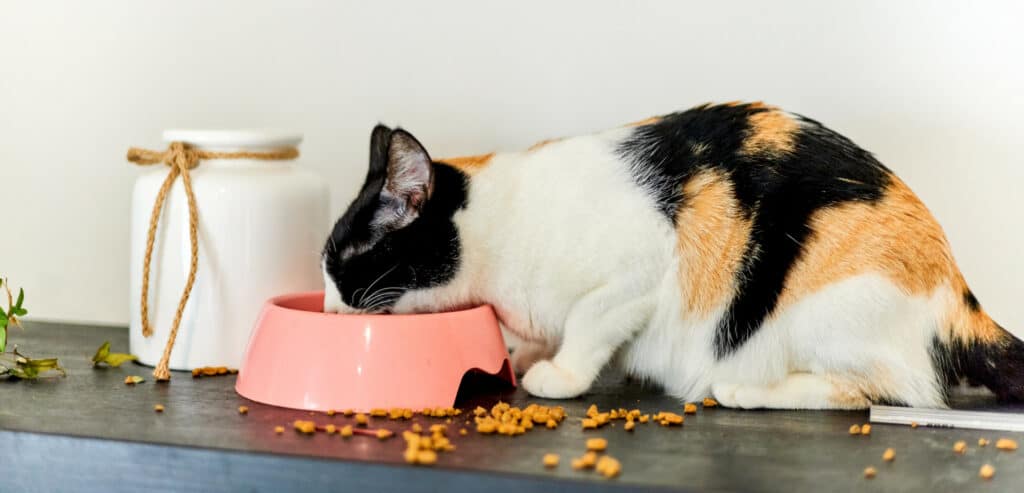
How to Feed a Stray Cat
Stray cats often struggle to find food, water, and shelter. This article explains how to feed a stray cat safely and effectively.
Is it Really a Stray Cat?
When you find what appears to be a stray, your first task is to confirm it doesn’t belong to anyone. Some cats are skilled beggars and will gladly accept an additional meal from a kindly stranger.
This can lead to problems for the cat’s owner, especially if your extra meal makes the cat gain weight. Or if the cat has special dietary requirements you’re unaware of.
The best way to find out if your “stray” cat has an owner is to take several photos of the cat and ask people who live in the neighborhood. Then, post photos of the cat in local social media groups and see if anyone responds.
Once you’ve established the cat is a stray, it’s time to start feeding.
Step 1: Location
Choose an appropriate feeding spot for the cat. This should be away from busy roads and preferably in a quiet area where the cat can eat without feeling threatened.
If possible, try to feed the cat in the same spot each day. You’re aiming to create a feeding routine for the cat, encouraging it to return at a time convenient to you.
Step 2: Safe Food
Cats are obligate carnivores. This means they must eat a diet high in protein and low in carbohydrates. In nature, a cat’s diet typically consists of small animals.
Choose wet or dry cat food specifically formulated for felines. Don’t feed human food to a community cat, as it may not meet its nutritional needs. It might even be harmful!

Step 3: Fresh Water
Provide fresh water every time you feed a community cat. Like us, cats need access to clean water to stay hydrated.
Clean, safe drinking water is often hard to come by on the street. When you provide a clean water source, you’re not just helping the cat to hydrate. You’re also preventing future health issues.
Step 4: Feeding Schedule
Establishing a regular feeding schedule helps the cat know when to expect food. This also helps you monitor how much the cat is eating and whether it’s gaining or losing weight.
Start by feeding the cat once a day, and gradually increase to twice a day if needed.
Step 5: Monitoring Health
Pay attention to the cat’s physical appearance and behavior. A healthy cat should have a shiny coat, bright eyes, and a good appetite.
If you notice any signs of illness or injury, contact a local animal shelter or veterinarian for advice.
Step 6: TNR
Trap, Neuter, and Return (TNR) is an essential component in caring for a community cat. It helps by preventing an explosion of new community cats in your neighborhood.
Many urban neighborhoods already have a TNR program, and it’s participating if available.
A TNR program involves humanely trapping the cat, getting it spayed or neutered, and then releasing it back into its environment.
Conclusion to Feeding a Stray Cat
By following the steps outlined in this article, you can make a positive impact on the life of a stray cat.
Remember to be patient and consistent in your efforts, as it may take time for the cat to trust you and adjust to its new feeding routine.
Your kindness and care can make a world of difference for these furry friends who find themselves living rough on the streets of our towns and cities.
Are you caring for a stray cat? Let’s work together.












